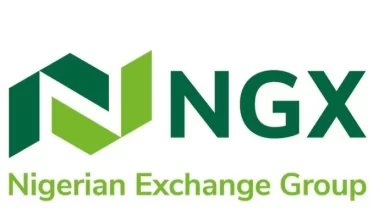
Sarah is a 30-year-old customer from Lagos. She has raised a refund request over email for a tummy trimmer that she recently bought from Fitness Forever. She mentions in the email that she does not want to interact over phone regarding this issue and prefers email correspondence. This is recorded in the compliance management software of Fitness Forever. But the company’s customer service agent is not aware of this and calls Sarah on her phone, much to her annoyance. So much that she stops buying from the company. A couple of weeks later, Sarah is bombarded with ads from Fitness Forever over social media, based on her previous social interaction with the brand. Now these ads don’t stop because the social media team from Fitness Forever does not know that Sarah is no longer a customer of the company.
What we have is a disgruntled customer who wants nothing to do with the brand anymore. This could have been avoided had the customer service agent and the social media team at Fitness Forever had access to Sarah’s privacy preferences and purchase history.
This is not a situation that’s unique to Fitness Forever. Scenarios like this are more common than companies like to acknowledge. This happens because information relating to the customer exists in silos, across the apps they use, and are not commonly accessible to everyone in the company. Customer data exists across tools such as:
This is how data exists in silos.
Managing customer data from different sources
What if these apps could talk to each other so that customer data across all touchpoints could be merged into a single source that’s available to all departments dealing with customer service and communication? Wouldn’t that solve Fitness Forever’s problem and that of many other companies? It would and this is exactly what a CDP (customer data platform) does.
The customer of today is interacting with brands across multiple platforms and apps, leaving behind a trail of invaluable information. Now each of these platforms is connected to a particular tool in the company’s tech stack and each tool congregates tons of data about the customer. For instance, the social media management platform collects data about the customer’s social interactions, likes and dislikes. The company’s customer service software gathers data on the customer’s complaints and resolutions, while the compliance software stores details about the customer’s privacy preferences.
Keeping track of disparate types of data in different formats, across different platforms, can be a cumbersome task. This is where a CDP comes in. It collects and collates customer data from multiple sources, such as sales intelligence platform, CRM (customer relationship management), event marketing platform, social media, compliance management, and mobile analytics and merges them to build a unified customer profile of every customer.
Simply put, CDP is a comprehensive suite of customer data that acts as a single source of truth, which is available to all platforms in the tech stack and can be used by any of the apps on the CDP’s integration chain.
The best part about CDP is that it promotes two-way integration. This means any platform in the stack can not only access data from the CDP but it can also feed data into it, so that the customer profile is enriched and updated at every step of the customer journey. This will help companies like Fitness Forever know their customer better and improve customer interactions.
Managing customer engagement across channels
Neha is a 20-year-old consumer from Bengaluru who loves shopping for affordable fashion jewelry. She does most of her shopping on her smartphone. She actively scouts for discounts and buys fashion jewelry almost every week. Funnily though, she keeps getting messages from the retailer Brands Bazaar about kitchen tools. That’s because her first purchase from Brands Bazaar was a knife. But Neha isn’t interested in kitchen items anymore and wishes Brands Bazaar would send her promotional material and offers on fashion jewelry.
This is a classic case of retailers not understanding customers and what they want. This kind of problem is automatically identified and solved by a CEP (Customer Engagement Platform).
The platform’s intelligent analytics enables companies to categorize their customers pre-emptively based on their personality, preferences and behavior, so that relevant information and communication can be sent to them, based on their needs and interests. For instance, discount seekers can be identified and targeted with price-drop campaigns and discounts. Customers who are likely to drop out can be identified and wooed back accordingly. Companies can also recognize loyalists and reward them in a relevant manner.
Once customers are segmented, the next question is: which platform should brands use to communicate with customers? This is also taken care of by the CEP, which automatically identifies a customer’s most preferred channel of communication (email/SMS/push notifications, and more), the best and most convenient time to send messages, and the best variation of the communication to be sent to a customer segment.
Deploying a separate tool to handle each mode of communication can get quite confusing and it is also a wasteful effort in terms of time and resources. Through CEP, retailers and brands can communicate with customers across multiple channels from one place. A smart CEP breaks down the barriers between analytics, marketing automation, and customer engagement and speeds up business growth.
For instance, using a CEP will not only help Brands Bazaar take note of Neha’s preferred product category and price point, but it will also help the retailer understand her preferred mode of shopping and communication channel and the times during the day when she is most active, so that messages can be customized and sent during these times.
CEP and CDP: A winning combination
CDP or CEP? That’s the question marketers are asking. Well, is this the question marketers should be asking at all? The short answer is no.
The long answer would be this. Both CDP and CEP help brands navigate the world of technology-driven marketing. And both have to exist and co-exist for brands to optimize the best of the two worlds. CDP and CEP solve different problems that businesses face. While CDP consolidates customer data from multiple tools and sources, CEP helps brands engage with customers in a meaningful manner.
Can brands engage properly with customers without knowing anything about them? And is mere data enough if intelligent insights are not drawn from it? Thus, businesses need a combination of CDP and CEP and must not make a choice between the two.
Thanks to CDP, the brand’s CEP platform is populated with valuable data points on customers. Using this data, CEP cleverly segments customers and interacts with them accordingly, across their preferred channel. It also sends the intelligence drawn from the data and the customer’s response to the communication back to the CDP, thus completing the loop.
This bidirectional integration benefits everyone—the apps integrated with the CDP, the CEP, the business, and, more importantly, the customer!
The global customer engagement solutions market was valued at $15.52 billion in 2020. It is expected to reach $30.92 billion by 2026, at a CAGR of 12.65% during 2021-2026. The global customer data platform market size is estimated to grow from $1,122.16 million in 2019 to $4,117.87 million by 2025, at a CAGR of 24.19%. India, in particular, is expected to see a high growth rate in CDP during this period, driven by its dynamic population of young users who access the internet frequently.
In this day and age, one cannot over-emphasize the importance of personalization and meaningful customer engagement and the benefits they can bring about for consumer businesses. The more information brands and retailers have about their customer, the better is their efforts at personalization. And the better the personalization is, the happier the customer is. This leads to better customer retention and conversion and ultimately results in improved business outcomes.
Both CDP and CEP are vital cogs that are closely linked to this personalization strategy and businesses that implement this dual stack are sure to get a head start in the game.




